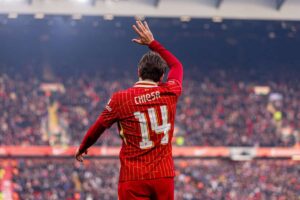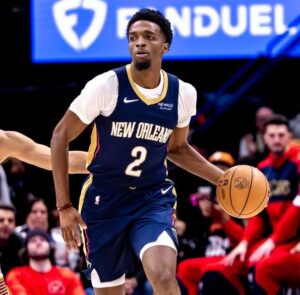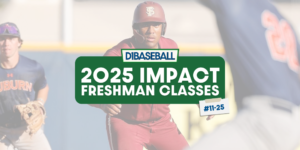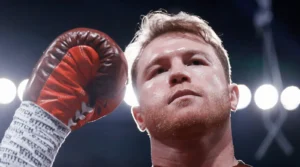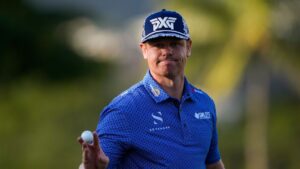
Having gone around the horn and then some to identify the strongest players at each position among the remaining contenders in the National and American Leagues, I’ve turned to the weakest ones, with the NL slate running yesterday. This is something of an offshoot of my annual Replacement Level Killers series, and in fact, even some confirmed October participants have spots that still fit the bill as true lineup sinkholes, only this time with no trade deadline to help fill them. For this, I’m considering full-season performance but with an eye to who’s best or worst now, with injuries and adjustments in mind. Unlike the Killers series, I’m also considering pitching, with the shortening of rotations and bullpens factoring into my deliberations.
Until now, the pool of teams I’ve considered has consisted of eight clubs in the American League and seven in the National League. On Thursday, we officially lost the Mariners, who were mathematically eliminated with wins by the Royals and Tigers. What’s more, the Twins stand on the brink of elimination — they own the head-to-head tiebreakers with both the Tigers and Royals, but are three games back with three to play — so I’ve opted to exclude them here.
For this installment, I’ll highlight the biggest trouble spots from among an AL field that still includes the Yankees (who clinched the AL East on Thursday), Guardians, Astros, Orioles, Royals, and Tigers.
Catcher: Bo Naylor and Austin Hedges, Guardians
The pitch framing prowess of Cleveland’s tandem of catchers was a significant factor in my choosing the Guardians’ defense as the strongest among remaining AL contenders. Starter Bo Naylor and backup Austin Hedges both rate as outstanding framers, and they’re decent blockers and throwers as well, but with the lumber in their hands it’s another story. Naylor’s 77 wRC+ (on a .205/.268/.357 slash line) is the sixth-lowest of any catcher with at least 300 plate appearances, and Hedges (.153/.203/.220, 20 wRC+) makes the retired Jeff Mathis look like a Silver Slugger candidate. Superduperutilityman David Fry, who has accounted for 1.0 WAR of the team’s 3.1 at this spot while taking just 61 PA as a catcher, hasn’t donned the tools of ignorance in a game since July 23 due to a lingering elbow injury, so don’t expect manager Stephen Vogt to start trading defense for offense.
First Base: Anthony Rizzo, Yankees
The Astros’ -1.5 WAR at first base is the second-lowest among all 30 teams, but with them cutting bait on José Abreu in mid-June and the Yankees demoting injury fill-in Ben Rice in August, this basically comes down to a choice between Houston’s Jon Singleton (.236/.320/.389, 105 wRC+) and New York’s Anthony Rizzo (.227/.298/.334, 83 wRC+). Singleton is a great human interest story but a player whose bat may profile best in a reserve role, though with manager Joe Espada using whichever of his two catchers isn’t starting behind the plate (Yainer Diaz or Victor Caratini) to cover the short half of a platoon, he’s hit for a 140 wRC+ in 103 PA — and all Astros first basemen have produced a 121 wRC+ — since the start of August.
Rizzo struggled for much of last year after playing through a previously undetected concussion, and whether or not that’s been a factor in this year’s performance as well, the reality is that he’s hit just .239/.333/.310 (90 wRC+) in 81 PA since returning from a fractured right arm. Neither DJ LeMahieu nor Oswaldo Cabrera have gotten much of a chance to improve upon Rizzo’s performance since their return, not that they were likely to, so the needle clearly points to the Yankees here.
Second Base: Jordan Westburg and Jackson Holliday, Orioles
I had planned to wade through the Twins’ murky second base situation before they were pushed to the brink, but the Orioles’ keystone combo deserves a closer look, particularly as they’ve been less valuable over the course of the full season, totaling 0.5 WAR to the Twins’ 1.0. Jackson Holliday entered the year as the consensus top prospect in baseball, but he went just 2-for-34 with two walks and 18 strikeouts in 10 games during a two-week stint in April before being sent back to Triple-A Norfolk. The 20-year-old rookie returned with a bang, homering four times in his first seven games after being recalled on July 31 — the same day an errant pitch fractured Jordan Westburg’s right hand. Holliday has since cooled off, with a 5-for-42 slump lowering his overall line to .174/.231/.293 (50 wRC+), with a 34.3% strikeout rate.
Still, Holliday may have enough tactical value to make the postseason roster, because Westburg has been very shaky defensively (-7 DRS, -5 FRV, -2.9 UZR in just 363.2 innings at second) and has not hit the ball hard in his four games since returning to the lineup. Overall, he’s hit .268/.317/.490 (129 wRC+), so he figures to get at least some piece of the action, warts and all.
Shortstop: Brayan Rocchio, Guardians
In terms of total production from their shortstops, the Tigers and Guardians are dead even at 0.4 WAR (tied for 28th in the majors), but with Javier Báez — who managed just a 42 wRC+ with -0.7 WAR — mercifully shelved by arthroscopic right hip surgery in late August, the team has turned to Trey Sweeney, a 2021 first-round pick acquired from the Dodgers in the Jack Flaherty trade. The 24-year-old Sweeney has helped the Tigers’ belated charge into a Wild Card position, hitting .233/.279/.398 (91 wRC+) with 0.6 WAR in his first 111 PA. The Guardians, on the other hand, have ridden all season with light-hitting Brayan Rocchio as their regular; he’s hit just .209/.301/.320 (81 wRC+), albeit with strong defense (11 DRS, 9 UZR, 4 FRV). Even so, his 1.2 WAR is still the lowest mark of any regular shortstop among the remaining AL contenders.
Third Base: Andy Ibáñez, Jace Jung, Zach McKinstry, and/or Matt Vierling, Tigers
Who’s on third? Hell if I know when it comes to the Tigers, because over their past 10 games they’ve started four different players there, with righties Andy Ibáñez and Matt Vierling taking three starts apiece and lefties Jace Jung and Zach McKinstry two apiece. As a group, Tigers third basemen have combined for just 0.9 WAR, the lowest of any playoff contender in either league by a full win. Gio Urshela hit for just a 75 wRC+ with -0.1 WAR before being released in mid-August; he’s now trying to hold down the hot corner in Atlanta in the absence of the injured Austin Riley. Jung, a 23-year-old 50-FV prospect whose older brother Josh mans third base for the Rangers, has done the bulk of the work since Urshela’s departure but has hit an odd-looking .247/.356/.311 (103 wRC+), hasn’t started there since September 22, and hasn’t started against a lefty since August 22; my guess is that he’ll be the odd man out when it comes to slimming down for the postseason roster.
The versatile Ibáñez, who has hit .242/.294/.356 (86 wRC+), has taken only 11 starts at third overall but five out of six when the team has faced southpaws this month. He’s the only one of this quintet (including Urshela) whose small-sample metrics at the spot aren’t in the red, further bolstering his claim on at least some of the playing time. Vierling, who has 40 starts at the hot corner, was in the lineup for all six of those games, five at DH and the other at third; he’s the best hitter of the bunch by far (.258/.312/.424, 109 wRC+), but it seems clear the team doesn’t trust his glove as much. McKinstry, who’s started 48 games at third overall while also bouncing around the three outfield positions, has hit just .218/.280/.341 (77 wRC+). Regardless of how this shakes out, it’s a weakness relative to the rest of the field.
Left Field: Alex Verdugo and Jasson Domínguez, Yankees
I went over this one in depth a few weeks ago. To recap, Alex Verdugo hit for a 127 wRC+ in March and April, but has nonetheless hit for just a .234/.293/.359 overall; his 85 wRC+ is the second-lowest of any qualifier in either league whose primary position is left field. The Yankees waited until September 9 to recall Jasson Domínguez, who hit .316/.350/.632 with four homers in a 40-PA cup of coffee last year, his age-20 season, before a torn ulnar collateral ligament in his right elbow sent him for Tommy John surgery. While he hit well in the minors (.314/.376/.504, 135 wRC+) after returning to action in mid-May, he missed six weeks due to an oblique strain while at Triple-A Scranton/Wilkes-Barre, and made just a single-game cameo before his call-up. He has yet to get going offensively (.191/.296/.340, 85 wRC+) though he’s hit the ball hard, but the real issue — particularly given the reasoning behind Verdugo holding onto the job despite his limp bat — is defense. Domínguez has made a few high-profile gaffes while playing left field, a position where he’s comparatively inexperienced and one that’s no small task to play in Yankee Stadium given its size. He’s under a lot of pressure, and so are the Yankees given the nature of this crash course. It would hardly be surprising for manager Aaron Boone to use those struggles to justify reverting to Verdugo in October.
Note that I could have very easily gone across the board in with Royals outfielders; the team has combined for just 1.4 WAR at the three spots, with MJ Melendez (-0.1 WAR) no great shakes in left but far less interesting than the aforementioned drama unfolding in the Bronx.
Center Field: Kyle Isbel, Royals
Kyle Isbel is a pretty good defensive center fielder, though his mixed set of metrics (8 FRV, 5 DRS, -0.7 UZR) leaves him short of being considered a top-tier flychaser. Yet the Royals have treated him that way, overlooking his rather meager offensive contributions; he’s hit .232/.288/.371 for an 82 wRC+. While he’s an outstanding baserunner — his 4.1 runs in that category accounts for over a quarter of his 1.5 WAR — who went 11-for-13 in stolen base attempts, his performance is yet another reminder that you can’t steal first base.
Right Field: Hunter Renfroe, Royals
Now playing for his seventh team in six seasons, the well-traveled Hunter Renfroe can usually be counted on to provide enough punch and decent defense to offset his low on-base percentages. This time around, though, his power has fallen off, even with a much more selective approach; he’s hitting .230/.300/.389 (92 wRC+) with 14 homers and just a .361 xSLG, and with subpar defense (-4 DRS, -4 FRV), he’s been essentially replacement level (-0.1 WAR). His two trips to the IL — one for a stress reaction and bone bruise in his left big toe, the other for a right hamstring strain — may factor into his woes. Since returning from the latter stint, he’s gone just 8-for-44, though he did hit his second homer of the month on Thursday.
Designated Hitter: Everybody besides Vinnie Pasquantino, Royals
I planned to spotlight Mitch Garver (.171/.286/.333, 86 wRC+) here before the Mariners’ slim playoff hopes bit the dust. So instead I’ll focus on the Royals, whose DHs have hit for just a 78 wRC+ and are a combined 1.4 wins below replacement level, tied for the majors’ second-lowest mark. The two players who have appeared here most frequently aren’t on the active roster; Nelson Velázquez was optioned to Triple-A Omaha in late June, while Vinnie Pasquantino has been out since August 30 due to a fractured right thumb that has required surgery. The latter was effective in the role, but none of the other 13 players the Royals have tried here, including both catchers (Salvador Perez and Freddy Fermin) and a trio of late-season arrivals (Tommy Pham, Robbie Grossman, and Yuli Gurriel), have had any sustained success. Pasquantino has begun taking batting practice and could be back sometime in October, but given the expectation he would be sidelined six to eight weeks, there’s no guarantee the Royals will still be playing in time for him to help.
Rotation: Guardians
The loss of Shane Bieber to Tommy John surgery looms large. Guardians starters have managed just a 4.39 ERA and 4.52 FIP overall, both of which rank among the AL’s bottom four, and even their improved 4.07 ERA and 4.23 FIP since the trade deadline rank among the bottom two among the remaining AL contenders. Between Tanner Bibee (3.47 ERA, 3.56 FIP), Ben Lively (3.80 ERA, 4.66 FIP), and the late-arriving Alex Cobb and Matthew Boyd, who have combined for 11 starts since returning from hip labrum and Tommy John surgeries, respectively, they can cobble together a presentable four-man rotation. It’s still one that will be at a disadvantage in this field, so it’s a good thing they have the league’s best bullpen.
Bullpen: Orioles
Craig Kimbrel merited consideration for the AL All-Star team, but pitched his way out of the closer role during the second half of July and August. The Orioles jettisoned him last week, but he was only part of the problem for a unit that has a 5.03 ERA and 4.18 FIP since the July 30 trade deadline. Neither of the two relievers they acquired from the Phillies — closer Seranthony Domínguez and lefty Gregory Soto — has provided much relief, with the former posting a 3.79 ERA and 5.85 FIP as an Oriole, the latter a 5.19 ERA and 3.80 FIP. Among their top setup men, Yennier Cano has been throwing well lately, but Cionel Pérez has not, and while the return of lefty Danny Coulombe from bone chip surgery could help, this isn’t the unit you’d choose from among the AL contenders.
Defense: Orioles
With -15 FRV and -2 DRS (both 11th in the AL), the Orioles are the only remaining AL contender (unless you count the Twins, which I haven’t) in the red in two of the three major metrics; their 6.7 UZR offsets that a bit, but not enough to make a case for another team to occupy this slot. Catchers Adley Rutschman and James McCann haven’t done well in the pitch framing metrics, Ryan O’Hearn is a DH-caliber first baseman (Ryan Mountcastle, who just returned from a fractured metacarpal in his right hand this week, is better), second base has been a problem for Westburg and likewise third base for Ramón Urías, and Anthony Santander’s -9 DRS in right field is particularly gruesome (though he’s closer to average by other measures). For a pitching staff that needs all the help it can get these days, it’s a worrisome situation.


